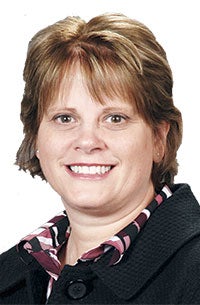The 411 on school lunch
Published 9:31 am Friday, April 7, 2017
By Mary Weikum
Austin Director of Food and Nutrition Services
In 2010, school lunch programs changed significantly with the passage of the Healthy Hunger Free Kids Act (HHFKA). Some of the stated purposes of the changes were to help fight childhood obesity, encourage fruit, vegetable and whole grain acceptance, and address the growing problem of food insecurity. To say that implementing these standards has been challenging would be an understatement, but our latest Minnesota Department of Education program audit shows we have met that goal.
The new regulations monitor not only the minimum calories required for a reimbursable meal, but also the maximum. A meal offered at Austin High School, for example, must be between 750-850 calories. A fruit or vegetable must be present on each tray and there are weekly requirements for different types of vegetables that must be met, such as orange, red, dark green or legumes. All grains must be 51 percent whole grain rich. Sodium content has also decreased significantly.
We also recognize that meeting the HHFKA regulations has meant making changes to our meals that are not always pleasing to our customers — the students, staff and parents at our schools. The goal, of course, is to meet our stringent rules, while satisfying our customers.
Below are a few strategies the Food and Nutrition Department has implemented to try to meet the rules, keep families informed and give students more choices.
NutriKids software is a program that is used by our dietitian when creating the menus.
This software tells us that we have all five components (protein, grain, fruit, vegetable, dairy) needed in the different portion sizes required for each age group. Making the weekly menus is a little like a Rubic’s Cube, in that if one area is incorrect, the whole cube is off! Something as simple as ketchup as a condiment can make our cube no longer work.

By Mary Weikum
Austin Director of Food and Nutrition Services
Nutrislice Software comes with an app that allows customers to see the menus as well as the nutritional information from their phone. This information is also available on the ISD 492 website under Food & Nutrition.
Fruit and vegetable bars at the elementary schools (grades 5-12 have salad bars available). Because students must have a fruit or vegetable on their tray, this gives the students more choices and introduces them to foods they may not have had an opportunity to try.
Our program is designed to meet “average” nutritional needs. Obviously, students can be the same age and size but, depending on activity level, their caloric needs may be very different. This is a difficult situation to address, one that I honestly don’t have a good answer for.
A very active student may need to bring a snack for before their sport practice, while an inactive student may not need all the calories provided to maintain a healthy weight.
In the past, our concerns were fried foods, excess fat content and lack of fresh fruits and vegetables in our lunches. As we improve in those areas, we experience many growing pains. Continuing to improve is key. I would like to invite anyone with a question or concern to call my office at 460-1919.
We can arrange to have lunch together at one of our schools and talk about ideas that will help us meet the needs of all students. It will be my treat!





